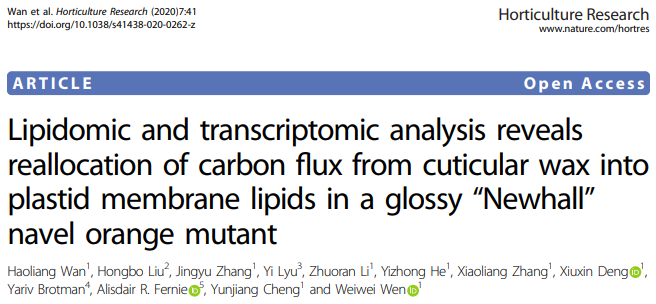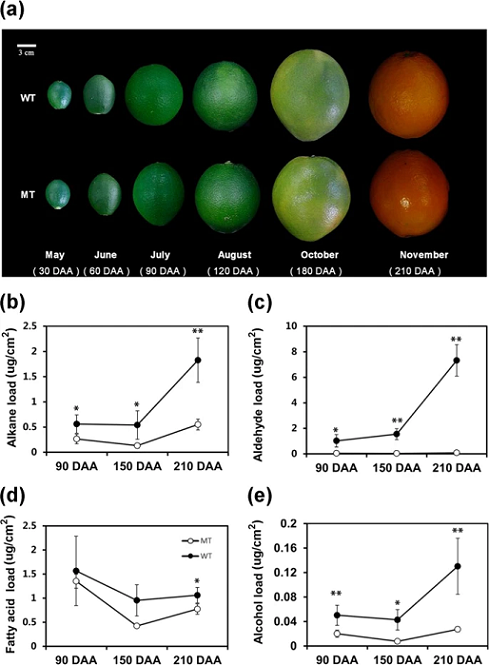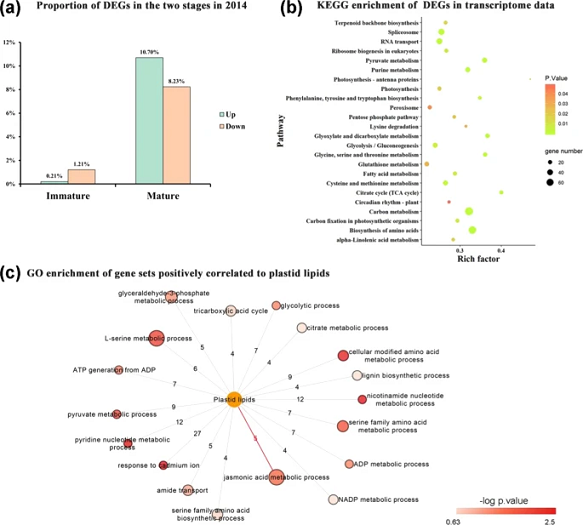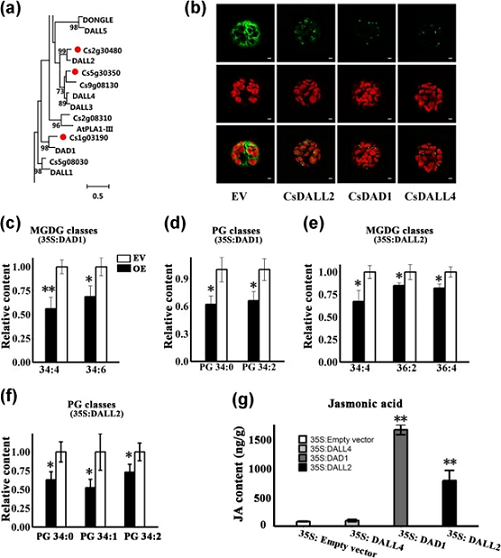Multi-Omics Joint Analysis: Lipidomics and Transcriptomics Joint Analysis Reveals the Molecular Mechanism of Glossiness in Newhall Navel Orange
Do you prefer glossy fruits when buying fruits? However, some glossy fruits on the market do not naturally have such a shine. Waxing and polishing are key steps in the commercialization of fresh citrus. However, the synthetic wax used in this process, due to its unique chemical properties, can block pores and affect fruit quality. Therefore, it is quite important to cultivate fruits with the desired color, high gloss, excellent internal quality, and strong antibacterial properties. As the first external barrier of plants to the environment, the waxy skin of citrus fruits has been reported to play an important role in water retention, gas exchange, and surface gloss. Combined with the external protection of the epidermis, membrane lipids directly protect plant cells and organelles, with plastid membrane lipids being the main components of the plant membrane lipid system.
Most molecular studies related to lipids in citrus generally focus on the cuticle, without highlighting the importance of membrane lipids. Based on previously reported glossy mutants of 'Newhall' navel orange, researchers conducted lipidomics and transcriptomics analyses of this glossy mutant (MT) and the wild type 'Newhall' navel orange (WT) at immature and mature stages to determine carbon exchange between wax and plastid lipids. They also attempted to elucidate the potential reasons for elevated JA levels in MT through functional identification of three upregulated lipase genes. This study enhances the understanding of quality maintenance in citrus fruits and provides new insights into the molecular mechanisms of naturally occurring variations in citrus lipid pools.

s5
Journal: Horticulture Research
Impact Factor: 5.404
Publication Date: April 2020
Article Link: https://www.nature.com/articles/s41438-020-0262-z
Abstract
Epidermal lipids and membrane lipids play important roles in maintaining the quality and disease resistance of fresh fruits. Many reports have indicated changes in alternative branched pathways in epidermal wax mutants. However, specific changes in lipids are still unclear. In this paper, researchers conducted a comprehensive time-resolved lipidomics and transcriptomics analysis on the 'Newhall' navel orange (WT) and its glossy mutant (MT) 'Gannan No.1'. The results showed that in MT, as fruit ripeness increased, wax formation was severely inhibited, accompanied by a substantial production of 36-carbon plastid lipids. Transcriptomics analysis further identified a series of key functional enzymes and transcription factors involved in the biosynthesis pathways of wax and membrane lipids. Additionally, the high accumulation of jasmonic acid (JA) in MT may be due to the need to maintain plastid lipid homeostasis since the expression levels of two significantly upregulated lipases (CsDAD1 and CsDALL2) were positively correlated with plastid lipids, and these two enzymes can hydrolyze plastid lipids to increase JA content. These findings provide new insights into the molecular mechanisms of natural variation in plant lipids, laying the foundation for improving the quality of citrus fruits.
Main Results
The researchers selected samples at three stages: fruit expansion (90DAA), beginning of ripening (150DDA), and full maturity (210DDA) to verify changes in wax content during fruit development. It was found that during the whole development process, the content of all aliphatic compounds in wax in MT was lower than that in WT, and the difference increased with the increase of fruit maturity. Lipidomics analysis of fruit peels at 150DAA and 210DAA identified and quantified 219 glycerolipids, and hierarchical clustering analysis showed that phospholipid metabolism in MT differed from that in WT. According to the relative content of all lipid categories, lipid accumulation in MT was higher than that in WT at both stages, especially at 210 DAA. To further study the differences in molecular biological regulation between MT and WT, researchers performed transcriptomics analysis on the peels of fruits harvested at 150 DAA and 210 DAA. Transcriptomics data showed that the proportion of differentially expressed genes (DEG) between WT and MT increased with fruit maturity, and these DEGs were significantly enriched in 24 KEGG pathways. JA biosynthesis is closely related to plastid lipids. To identify key lipases involved in plastid lipid degradation and JA formation, researchers identified 37 predicted lipases through a blast search. Phylogenetic analysis showed that three PLA1 genes were grouped in the DAD1-like gene family, among which two genes, CsDAD1 and CsDALL2, were positively correlated with plastid lipids. By transiently overexpressing these three genes in tobacco, researchers found that JA levels increased by 19-fold and 8-fold, respectively, in CsDAD1 and CsDALL2 overexpression lines, indicating that these two genes have a significant impact on JA formation.

Glossy phenotype and wax synthesis with increased maturity in MT and WT

Transcriptomics analysis of MT and WT

Functional characterization of DAD1-like genes in tobacco
Baitaike Biotechnology provides integrated multi-omics analysis services, including lipidomics and transcriptomics combined analysis.
Interested teachers are welcome to contact us!
Related Services
Integrated analysis of transcriptomics and lipidomics
Lipidomics
Transcriptome sequencing
Multi-omics integrated analysis
How to order?





